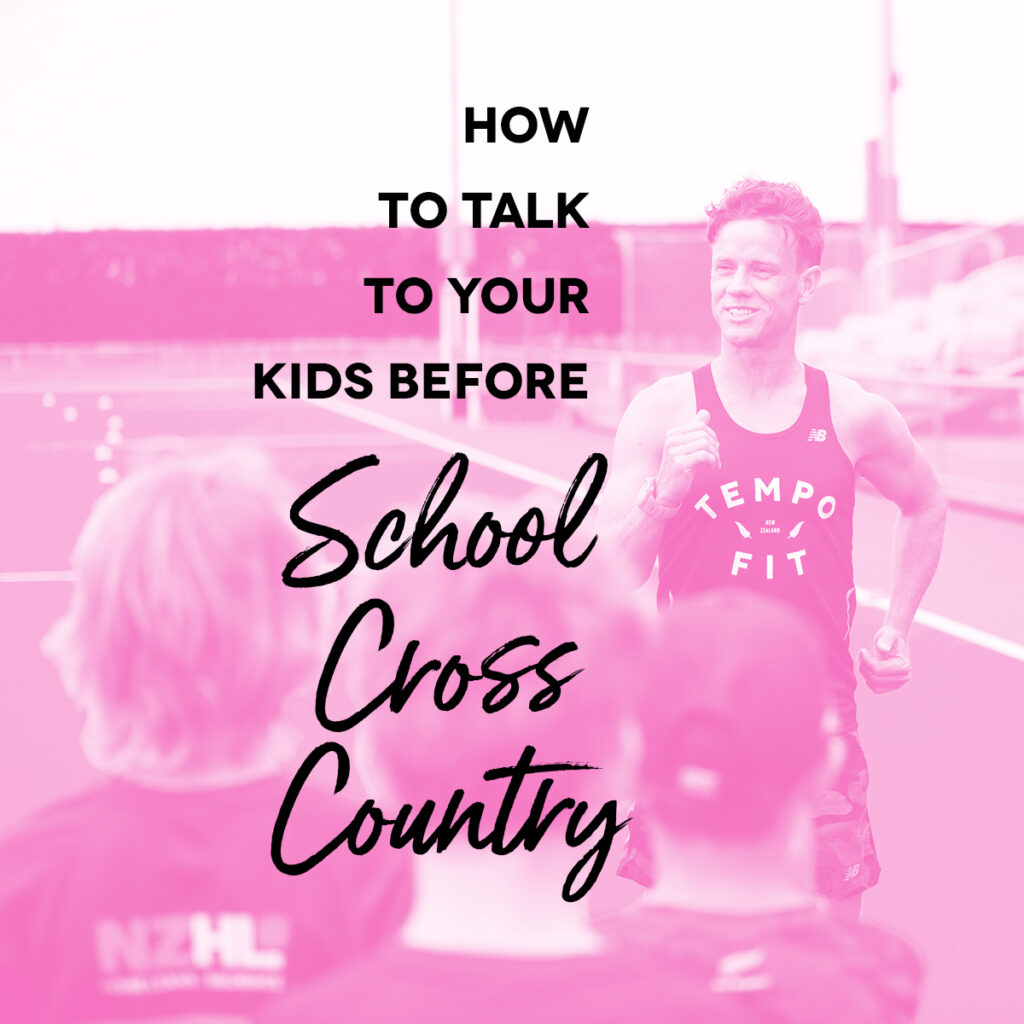
Most of the adult runners that I’ve coached tell me that they had various levels of childhood trauma from school cross country.
It’s the day when school sick days spike, injuries come out of nowhere (then magically heal at the 3pm bell), and it’s perhaps the one time in the New Zealand curriculum when competing against your classmates is not only allowed, but becomes the primary focus. Don’t get me wrong, I think school cross country should remain in every school’s calendar, but the approach and preparation needs some serious work.
Before getting into the weeds of running in schools, in this article, I’d like to address what parents can do to help their kids get the most from what is for many kids the most dreaded day of the year.
Last year I found myself encouraging my daughter to “just have fun” as I sent her off to school on cross country day. On reflection, while this was well intended, it actually missed the mark.
Running school cross country is about as fun as a cold shower in August.
There are many health benefits to cold showers, both mental and physical (with massive post-shower endorphin kicks), but getting under that icy water is hard and takes a lot of self-discipline, especially in winter.
Likewise, school cross country, if done right, can lead to wonderful physical and mental developments (as well as endorphin kicks), but you’d be lazy with your words if you described it as fun. And remember, this comes from a running coach and someone who runs every day: fun is not the primary goal, but giving it a really good go is.
“Give it a really good go!” This is what I’ll be saying to my daughter this year before her cross country, and here’s why.
In a typical Kiwi class there will be kids with tremendous natural running ability, kids who do organised sport for two or more hours a day, and then, on the flipside, kids who are entirely sedentary (on a side note, childhood obesity rates jumped by 34% after lockdown!). The gap in physical abilities is only getting wider. And this leads to further stress on behalf of the less active kids. So, each child needs to understand from you, their caring parent/caregiver, what “giving it a really good go” means for them, in particular.
For some it will mean aiming to jog the whole way without walking, for some taking strategic walking breaks, for some walking the whole way without stopping, for some actually taking rest breaks to ensure they can walk to the finish (yes, there are many kids in New Zealand in this group—and proportionally far more adults, to be brutally honest), and for a few it will mean competing for the win. Understanding what, for your child, means “giving it a really good go” is the first thing to get right. Hopefully the list in this paragraph will help provide some proactive options.
Now that we’ve sorted the overall objective, we can then break down what “giving it a really good go” means in each portion of the cross country.
Legendary New Zealand marathon runner, 1960 Rome Olympics bronze medallist and coach Barry Magee talks about breaking marathons into thirds, where for each third the focus is control, control and control.
The control in the starting third is making sure you don’t go too fast. Kids are notorious for this. And starting with a sprint immediately puts them in oxygen debt and means that for the majority of the race the body (and mind) is actually in recovery mode and not work mode. So, give this first third a really good go by starting slower than you think you should, allowing other runners to move ahead of you.
At around the one-third mark, all of those runners (unless they are highly trained teenagers) WILL start to slow (guaranteed!), so now the focus changes to controlling yourself in order to start catching people. Imagine a rope is tied to the person in front of you and you’re being reeled in by that rope. This isn’t about necessarily being overly competitive, but rather using the runners around you to give you a target to aim for and about staying controlled in your ability to maintain pace while others are slowing. This is your focus for giving it a really good go at this middle stage.
Then at two-thirds through the cross country, you switch control modes to getting the most out of yourself.
Can you increase speed to the finish? Can you pass anyone? Can you see what your body and mind is capable of in these final stages? Look to the finish line, let the cheers from your school mates and teachers push you along. Know that the faster you move the quicker it will be over. Drive the arms, pump the legs, stand tall, and enjoy being a creature that is designed to run and walk and is giving it a really good go all the way to the finish.
What place did you get? Doesn’t matter. It. Does. Not. Matter.
Your body is your body and no one else was running in your body that day except for you. So the only person who can tell you if you ran a good cross country is yourself. Your only metric should be “Did I give it a really good go?”
Hayden Shearman is the head coach of TempoFit and TempoFit Kids (with group coaching available in Taranaki), as well as heading up school’s running initiative Run Revolution.



